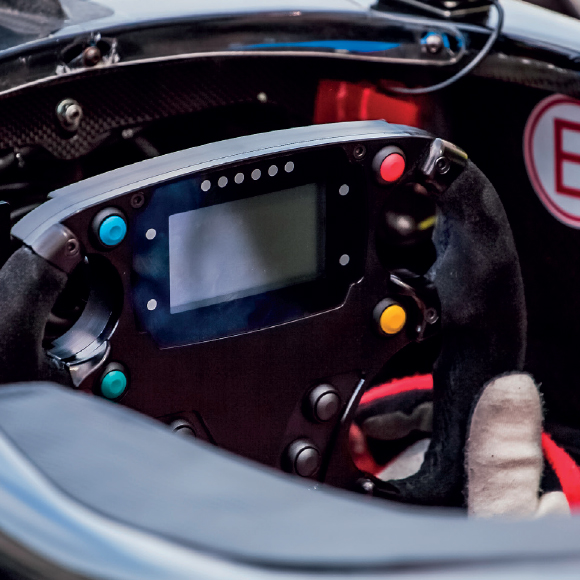

This control and management system gathers all the control functions and the hydraulic system commands on a dashboard with touch-sensitive keys.
The management of its display allows excellent reading conditions adapted to the external brightness.
This subassembly uses a nested PID control loops with inputs from multiple sensors.
The architecture is based on an STM32 microcontroller, a task sequencer schedules the actions at a 1ms rate.
A J1939 CAN bus communicates with the vehicle’s heat engine.
A USB bus allows the system to be configurated.
Our strengths

This distribution unit allows the supply of power to the different essential parts of a racing vehicle.
A current higher than 100A flows through the PCB. Currents switching is achieved thanks to low-ESR MOSFETs.
The PCB is directly bonded on a heat sink in order to dissipate power from MOSFETs, which involves a very small temperature difference between components and the cooling system.
Increasing the printed circuit board layers number enable high currents to flow on a smaller area. Moreover, the external layers can remain the usual copper thickness allowing the use of common integrated fine pitch pin components, such as microcontrollers and ASICs. This process makes it possible to combine power and control signalling within the same PCB.
Our strengths
Contact